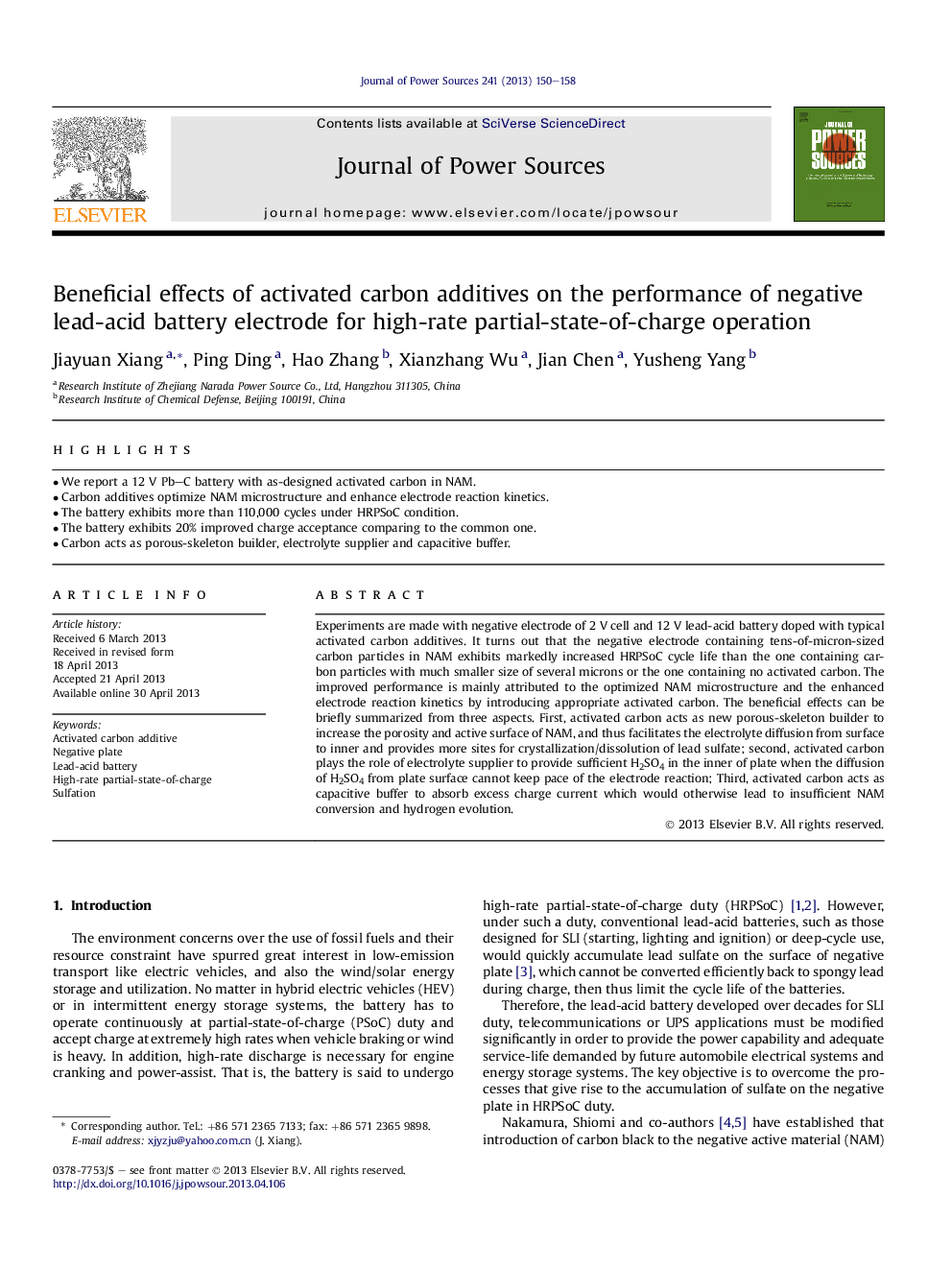| Article ID | Journal | Published Year | Pages | File Type |
|---|---|---|---|---|
| 7740799 | Journal of Power Sources | 2013 | 9 Pages |
Abstract
Experiments are made with negative electrode of 2Â V cell and 12Â V lead-acid battery doped with typical activated carbon additives. It turns out that the negative electrode containing tens-of-micron-sized carbon particles in NAM exhibits markedly increased HRPSoC cycle life than the one containing carbon particles with much smaller size of several microns or the one containing no activated carbon. The improved performance is mainly attributed to the optimized NAM microstructure and the enhanced electrode reaction kinetics by introducing appropriate activated carbon. The beneficial effects can be briefly summarized from three aspects. First, activated carbon acts as new porous-skeleton builder to increase the porosity and active surface of NAM, and thus facilitates the electrolyte diffusion from surface to inner and provides more sites for crystallization/dissolution of lead sulfate; second, activated carbon plays the role of electrolyte supplier to provide sufficient H2SO4 in the inner of plate when the diffusion of H2SO4 from plate surface cannot keep pace of the electrode reaction; Third, activated carbon acts as capacitive buffer to absorb excess charge current which would otherwise lead to insufficient NAM conversion and hydrogen evolution.
Related Topics
Physical Sciences and Engineering
Chemistry
Electrochemistry
Authors
Jiayuan Xiang, Ping Ding, Hao Zhang, Xianzhang Wu, Jian Chen, Yusheng Yang,
